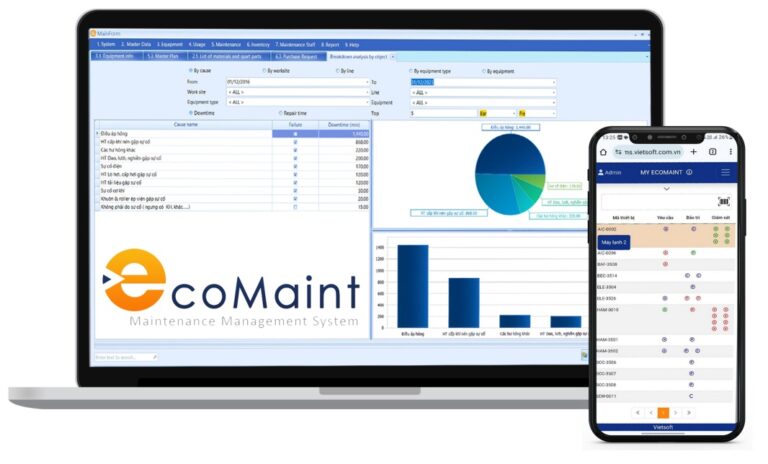I. What Is SCADA?
SCADA, or Supervisory Control and Data Acquisition, is a sophisticated system that combines hardware and software to monitor and control industrial processes in real time. At its core, SCADA enables organizations to oversee operations, collect data from equipment, and issue commands to devices such as pumps, valves, and sensors. By providing a centralized interface, SCADA systems empower operators to make informed decisions, optimize efficiency, and prevent costly downtime.
SCADA systems are designed to interface with plant-floor machinery, gathering data through sensors and actuators, and presenting it via intuitive Human-Machine Interfaces (HMIs). These systems are widely used across industries like manufacturing, energy, water treatment, and oil and gas, where precision and reliability are paramount.
Key Functions of SCADA Systems
SCADA systems perform several critical functions in industrial settings:
Real-Time Monitoring: SCADA collects and displays real-time data from machinery, such as temperature, pressure, or flow rates, allowing operators to track performance instantly.
Control Operations: Operators can issue commands to adjust equipment settings, start or stop processes, or recalibrate systems directly through the SCADA interface.
Data Logging: SCADA records operational data into historians or databases, enabling trend analysis and performance auditing.
Alarm Management: The system detects anomalies, such as equipment malfunctions or process deviations, and alerts operators to take corrective action.
By integrating these functions, SCADA systems ensure seamless operations and data-driven decision-making.
II. The Role of SCADA in Modern Manufacturing
In modern manufacturing, SCADA systems are the backbone of operational efficiency. They bridge the gap between physical equipment and digital control, enabling manufacturers to achieve higher productivity, improved quality, and reduced costs. Let’s explore how SCADA contributes to production environments.
1. Enhancing Operational Efficiency
SCADA systems streamline manufacturing by providing a centralized platform for monitoring and controlling processes across multiple sites. For example, a factory producing automotive parts can use SCADA to monitor assembly line performance, adjust machine speeds, and detect bottlenecks in real time. This capability minimizes waste and ensures consistent output.
2. Improving Quality Control
Quality is a top priority in manufacturing, and SCADA plays a pivotal role in maintaining standards. By continuously monitoring key parameters, such as temperature or pressure, SCADA ensures that processes stay within specified limits. If a deviation occurs—say, a batch of products shows defects—SCADA alerts operators immediately, allowing them to pause production and address the issue before it escalates.
3. Reducing Downtime
Downtime can be a significant cost driver in manufacturing. SCADA systems mitigate this by providing early warnings of potential equipment failures. For instance, if a motor’s temperature exceeds a safe threshold, SCADA can trigger an alarm, prompting maintenance before a breakdown occurs. This proactive approach saves both time and money.
4. Enabling Data-Driven Decisions
SCADA systems collect vast amounts of data, which can be analyzed to uncover insights about production trends, equipment performance, and process inefficiencies. By integrating with SQL databases or Manufacturing Execution Systems (MES), SCADA enables manufacturers to make strategic decisions that enhance profitability.
III. Components of a SCADA System
To understand what SCADA is, it’s essential to break down its core components. These elements work together to ensure seamless data collection, processing, and control.
1. Supervisory Computers
The supervisory computer is the heart of a SCADA system. It gathers data from field devices and sends control commands to equipment. In smaller setups, a single PC may suffice, while larger systems use multiple servers, HMIs, and redundant configurations to ensure continuous operation.
2. Remote Terminal Units (RTUs)
RTUs are microprocessor-based devices that connect to sensors and actuators in the field. They collect data, such as flow rates or temperature, and transmit it to the supervisory computer. RTUs are rugged, often operating in harsh environments like remote oil fields or water treatment plants, and support protocols like IEC 61131-3 for automation.
3. Programmable Logic Controllers (PLCs)
PLCs are specialized computers that control machinery by converting sensor signals into digital data. They are highly reliable and widely used in manufacturing for tasks like regulating conveyor speeds or controlling robotic arms. PLCs often complement or replace RTUs in modern SCADA systems.
4. Human-Machine Interface (HMI)
The HMI is the operator’s window into the SCADA system. It displays real-time data through graphical dashboards, mimic diagrams, or animated schematics. For example, an HMI might show a pump’s status or a pipeline’s flow rate, allowing operators to make quick adjustments using a mouse or touchscreen.
5. Communication Infrastructure
SCADA systems rely on robust communication networks to connect supervisory computers, RTUs, and PLCs. These networks may use Ethernet, radio, satellite, or fiber optics, depending on the application. Redundant communication paths ensure reliability, even in the event of network failures.
6. Historians and Databases
Historians store time-stamped data, alarms, and events, enabling long-term analysis. For instance, a manufacturer can use historical data to identify recurring issues in a production line, leading to process improvements.
IV. How SCADA Works in Manufacturing
SCADA systems operate through a hierarchical structure, often referred to as functional levels, which coordinate data flow and control across the production environment.
1. Functional Levels of SCADA
Level 0: Field Devices
This level includes sensors (e.g., temperature or pressure sensors) and actuators (e.g., valves or motors) that interact directly with the production process.Level 1: Input/Output Modules
RTUs or PLCs at this level collect data from field devices and execute control commands. They operate autonomously, ensuring processes continue even if communication with the supervisory system is lost.Level 2: Supervisory Computers
The supervisory computer aggregates data from Level 1 devices and presents it via HMIs. Operators use this level to monitor processes and issue commands, such as adjusting a machine’s setpoint.Level 3: Production Control
This level focuses on monitoring production metrics, such as output rates or quality standards, without directly controlling equipment.Level 4: Production Scheduling
The highest level involves strategic planning, such as setting production targets or scheduling maintenance, based on data from lower levels.
2. Example: SCADA in Action
Imagine a beverage manufacturing plant. A SCADA system monitors the temperature of a pasteurization unit. If the temperature exceeds the optimal range, the system triggers an alarm on the HMI, alerting the operator. The operator can then adjust the heater settings or shut down the unit to prevent product spoilage. Meanwhile, the system logs the event for future analysis, helping the plant optimize its processes.
V. Evolution of SCADA Systems
SCADA systems have evolved significantly since their inception in the 1970s. Understanding this evolution provides context for their current capabilities.
1. First Generation: Monolithic SCADA
Early SCADA systems relied on mainframe computers and proprietary protocols. They were standalone systems with limited connectivity, used primarily for basic monitoring and control.
2. Second Generation: Distributed SCADA
In the 1980s and 1990s, SCADA systems adopted Local Area Networks (LANs), allowing multiple stations to share data in near real-time. However, proprietary protocols limited interoperability with other vendors’ systems.
3. Third Generation: Networked SCADA
By the 1990s, SCADA systems embraced open protocols like Ethernet and TCP/IP, enabling communication across diverse systems. This made SCADA more scalable and cost-effective for large-scale operations.
4. Fourth Generation: Web-Based SCADA
Modern SCADA systems leverage web technologies, allowing operators to access data from anywhere via browsers on devices like laptops or smartphones. Integration with SQL databases and cloud platforms has further enhanced their flexibility and analytical capabilities.
VI. Benefits of SCADA in Manufacturing
SCADA systems offer numerous advantages that make them essential for modern production environments.
1. Real-Time Insights
SCADA provides instant visibility into operations, enabling operators to detect issues like equipment malfunctions or process deviations before they escalate.
2. Centralized Control
With SCADA, operators can manage multiple processes from a single interface, reducing the need for on-site personnel and improving response times.
3. Enhanced Reliability
SCADA’s redundant systems and autonomous control capabilities ensure continuous operation, even during network or hardware failures.
4. Scalability
Modern SCADA systems are highly scalable, accommodating everything from small factories to sprawling industrial complexes.
5. Improved Security
While early SCADA systems were vulnerable to cyber threats, modern systems incorporate encryption, VPNs, and advanced firewalls to protect against unauthorized access.
VII. Challenges of SCADA Systems
Despite their benefits, SCADA systems face challenges that manufacturers must address.
1. High Implementation Costs
Deploying a SCADA system requires significant investment in hardware, software, and training. Downtime during implementation can also be costly.
2. Complexity
SCADA systems are complex, requiring skilled operators and regular maintenance to ensure optimal performance.
3. Cybersecurity Risks
As SCADA systems become more connected, they are increasingly vulnerable to cyberattacks. Robust security measures, such as those mandated by standards like NERC CIP, are essential.
VIII. Integrating SCADA with MES SmartTrack
For manufacturers seeking to maximize the potential of SCADA, integration with advanced Manufacturing Execution Systems (MES) like MES SmartTrack from Vietsoft offers transformative benefits. MES SmartTrack complements SCADA by providing real-time production tracking, quality control, and performance analytics. By combining SCADA’s equipment-level control with MES SmartTrack’s production management capabilities, manufacturers can achieve end-to-end visibility and optimization.
For example, while SCADA monitors machine performance, MES SmartTrack analyzes production data to identify inefficiencies, streamline workflows, and ensure compliance with quality standards. This synergy enables manufacturers to stay competitive in Vietnam’s fast-growing industrial market.
To learn more about how MES SmartTrack can enhance your SCADA system, visit Vietsoft’s MES SmartTrack product page.
IX. Conclusion
SCADA is a cornerstone of modern manufacturing, enabling real-time monitoring, control, and data analysis to drive efficiency and quality. By understanding what SCADA is and how it integrates with systems like MES SmartTrack, manufacturers can unlock new levels of productivity and competitiveness. As technology continues to evolve, SCADA systems will remain at the forefront of industrial innovation, empowering businesses to navigate the complexities of modern production with confidence.





